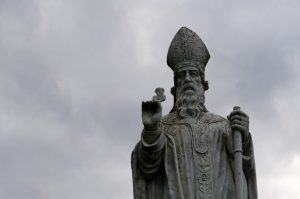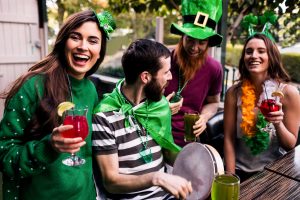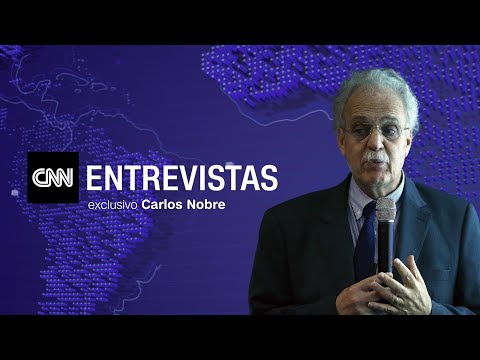Saint Patrick’s Day
Why think about creating a Saint Patricks Day homeschool unit study? I am far from Irish.
But both my daughters have Irish blood flowing through their veins.
So, I feel an obligation to introduce them to all of their roots.
Even the green ones.
During the month of March, we are studying all things Irish.
(Ok, maybe not ALL things Irish.)
What we are studying includes the origins and popularity of Saint Patrick’s Day.
Far be it for me to allow them to think it’s just a day to dress in sparkly green clothes and drink Guinness.
Who was Saint Patrick?
First of all, most know that he is the (primary) patron saint of Ireland.

Statue of Saint Patrick on the Hill of Tara, Ireland
That he was a Romano-British Christian missionary and bishop there.
Also, that Irish pirates captured him and took him to Ireland. Where he was a slave for six years.
After his escape, he received a vision calling him back to Ireland.
However, there are many legends that go along with Saint Patrick.
Check out these legends (and the fact-checking) below.
Legend of the Shamrock
Legend credits Saint Patrick with teaching the Irish about the Holy Trinity doctrine using a shamrock.
The story first appeared in writing in 1726. Although, the tale might be older than that.
As a result, the shamrock is a central symbol for Saint Patrick’s Day.
Fact
Three is a significant number in pagan, Christian, and other religious philosophies.
Using the shamrock’s three leaves may have aided Saint Patrick in his evangelism.
Legend of the Snakes
There are not that many snakes in Ireland.
If any.
This fact gave rise to the tale that Saint Patrick banished the snakes from Ireland.
Apparently, snakes attacked him during a 40-day fast on top of a hill.
Because of the attack Saint Patrick chased them into the sea.
Fact
Evidence suggests that post-glacial Ireland never had snakes.
“At no time has there ever been any suggestion of snakes in Ireland, so [there was] nothing for St. Patrick to banish,” says naturalist Nigel Monaghan.
Nigel is the keeper of natural history at the National Museum of Ireland in Dublin. He has searched extensively through Irish fossil collections and records.
Celebrations and Traditions
On Saint Patrick’s Day, walking around without wearing some form of green on your person is not cool. In fact, you will probably (more like definitely) get lovingly pinched by someone.
I say lovingly, but we know how crazy some friends can get.
It is customary to wear the shamrock or some green clothing on this day.
Exactly where did this tradition come from, though?
Well, the color green has been associated with Ireland since the 1640s.
- The Irish Catholic Confederation used the green harp flag.
- Green ribbons and shamrocks have been worn on Saint Patrick’s Day since the 1680s.
- In the 1790s, green was associated with Irish nationalism because of its use by the United Irishmen.
- “Wearing of the green” are words from a song lamenting the persecution of United Irishmen for wearing the color green.
During the ninth and tenth centuries, Irish in Eurpoe were already celebrating the Saint Patrick’s Day feast.
However, the Catholic Church did not place it on the universal liturgical calendar until the early 1600s.
Since then, it became a holy day of obligation for Roman Catholics in Ireland.
(Although, it is also a feast day in the Church of Ireland – and Anglican Communion church.)
Here’s an interesting note (Something I didn’t know, anyway.):
The church calendar avoids the observance of saints’ feasts during certain solemnities. So, the saint’s day is moved outside those time periods.
For example, when 17 March falls during Holy Week, it affects Saint Patricks Day.
As a result, in 2008, it was officially observed on 14 March to keep it from bumping into Palm Sunday.
It happened before in 1940. It won’t happen again, though until 2160.
Yet, the festivities can still happen on that day or on a weekend near 17 march.
The Bank Holiday Act of 1903 made Saint Patrick’s Day an official public holiday in Ireland.
Here’s what I thought was so funny. James O’Mara was the Irish member of Parliament who introduced the act.
He also later introduced the law requiring all public houses shut down after drinking got out of hand.
So, there was no public drinking in Ireland on Saint Patrick’s Day!
At least, not until the 1970s when it was repealed.
Where’s the Party?!
Many different areas celebrate Saint Patrick’s Day in their own unique way.
Here are different regional celebrations and traditions around the globe:
Ireland
- first parade-1903-in Waterford
- Irish Language Week declared by the Gaelic League week of Saint Patrick’s Day
- procession included Mayor, Waterford Corporation, the Trades Hall and various trade unions
- in 1916, the Irish Volunteers held parades throughout Ireland (38 recorded)
- after the Irish war of Independence, celebrations were muted
- In 1927, the selling of alcohol was banned on Saint Patrickk’s Day (not repealed until 1961)
- 1931 – the first official public Saint Patrick’s Day parade in Dublin
- between 1960s and 1990s (a conflict known as The Troubles) public Saint Patrick’s Day celebrations were rare and usually associated with the Catholic community
The governement of Ireland began a campaign to use Saint Patrick’s Day to showcase Irish culture. They held the first festival on 17 March 1996.
In 1997, it became a 3-day event. By 2000, it was four days. By 2006, five days.
Great Britain
- The Quenn Mother, Queen Elizabeth, presented bowls of shamrock flown from Ireland to members of the Irish Guards
- Birmingham holds the third biggest parade in the world after Dublin and New York
- Manchester holds a two week festival prior to Saint Patrick’s Day
Canada
- Montreal – one of the longest-running and largest parades in North America (since 1824, yearly, without interruption!)
- Guinness, among others, have lobbied to make Saint Patrick’s Day a national holiday
Argentina
- In Buenos Aires, a large party is held in Reconquista
- Neither the Catholic Church or the Irish community take part in the organization
Montserrat
- One of three places where Saint Patricks Day is a public holiday
- the holiday also commemorates a failed slave uprising on 17 March 1768
Russia
- 1992 – the first Saint Patrick’s Day parade
- 2014 – Irish celebrated from 12 to 23 March
Asia
- 1992 – The Irish Network Japana organizes first Saint Patrick’s parade
- The Irish Association of Korea celebrates Saint Patrick’s Day in Seoul (since 1976)
- In Malaysia, the St Patricks Society of Selangor organizes a yearly ball. The biggest celebration in Asia.
Problems with Modern Celebrations
Unfortunately, many have come to associate Saint Patrick’s Day with loud parties, public drunkenness, and disorder.
Some argue that the festivities
- are too commercialized and tacky. (Although tacky is rather subjective.)
- have strayed from their original purpose – honoring Saint Patrick and Irish heritage.
- foster demeaning stereotypes of Ireland and Irish people (leprechaun outfits are based on derogatory 19th-century caricatures)
In the United States, it is interesting to note that Saint Patricks Day is a legal holiday in only two areas.
- Suffolk County, Masachusetts
- Savannah, Georgia
However, Saint Patricks Day has been celebrated since the late 18th century.
It is surprising that the first observance of Saint Patrick’s Day in 1737 Boston was not a Catholic one.
During that time, Protestants dominated Irish immigration to the colonies.
Even New York’s first observance was held at the home of an Irish Protestant.
Did you know that?
In my opinion, no unit study is complete without cool trivia. And a Saint Patricks Day homeschool unit study should be no different.
- General George Washington was a member of Philadelphia’s Friendly Sons of St. Patrick (founded to provide relief to Irish immigrants)
- Savannah, Georgia, Peoria, Illinois and Cleveland, Ohio ALWAYS hold parades on March 17th
- The new immigrants adopted Corned Beef. It is not a traditional Irish dish.
- Chicago and Jamestown, New York dye their rivers green
Over the years, Saint Patrick’s Day has become a day of celebration and festivities.
Of course, we can debate whether the patron saint of Ireland would approve or object is.
Nevertheless, people of Irish and non-Irish descent celebrate this day with its legends and unwitting insults.
Upon ending our Saint Patricks Day homeschool unit study, I found that the holiday has much more substance than just wearing green and drinking beer.
I was proud to introduce my kids to that not so well known part of their heritage.
Additional Saint Patricks Day Homeschool Unit Study Resources:
Saint Patrick’s Day Crafts and Children’s Activities at DLTK’s Crafts for Kids
All About Saint Patrick’s Day for Kids and Teachers at KiddyHouse.com
Happy St. Patrick’s Day from a Kid’s Heart
St. Patrick’s Day Ideas and Activities for Kids from Disney Family
St. Patrick’s Day from Celebrating Holidays
Holidays and Special Days – St. Patrick’s from DMOZ
History of Saint Patrick’s Day with FREE Printables and Worksheets from Free Homeschool Deals
5-Day Unit Study on St. Patrick from Knowledge Quest











